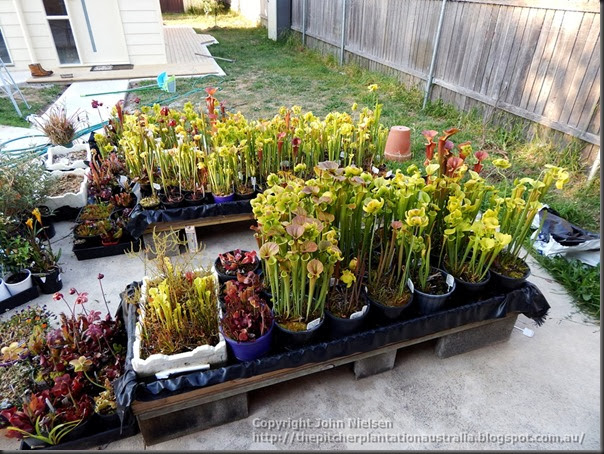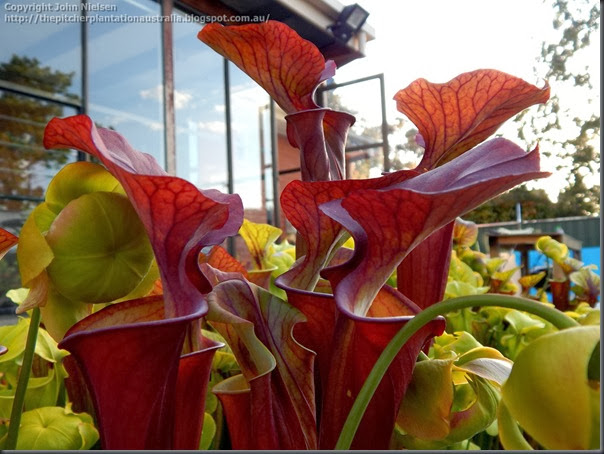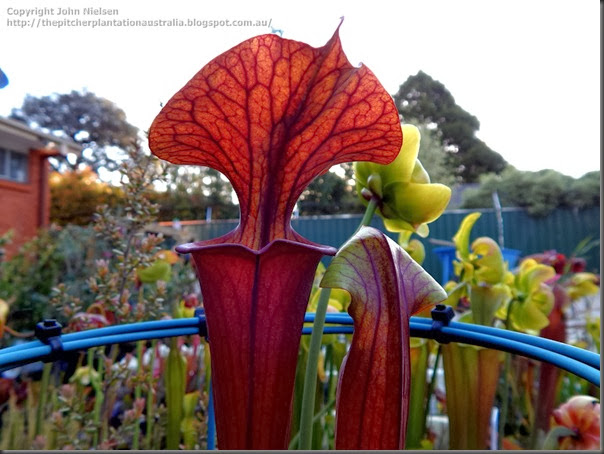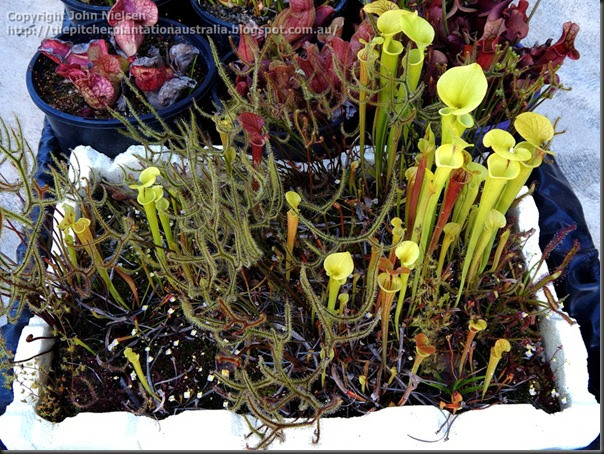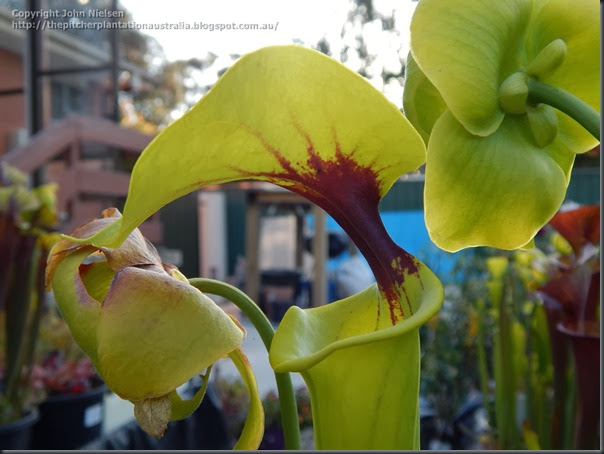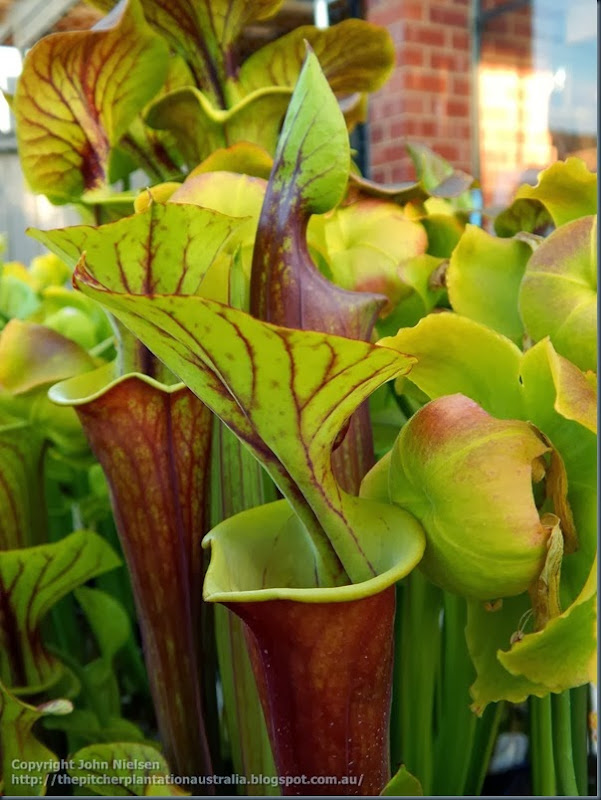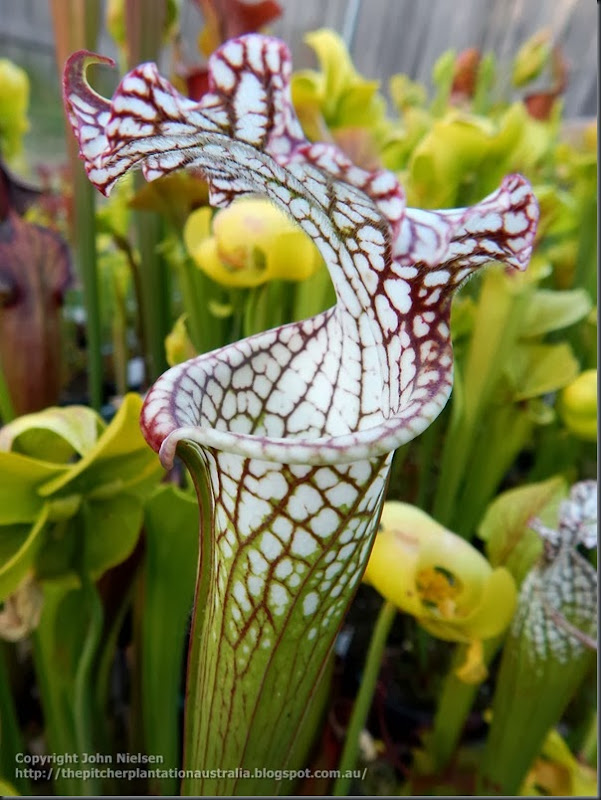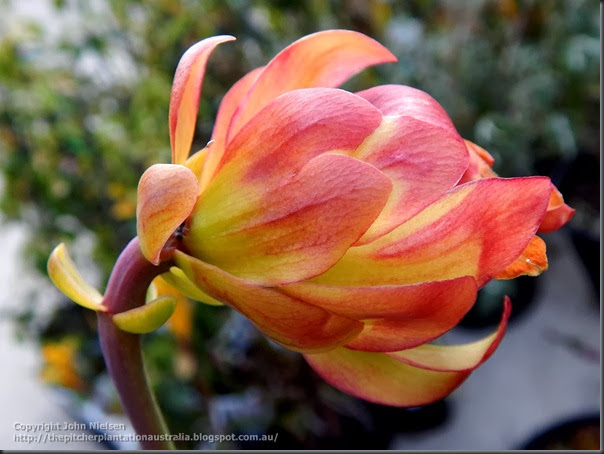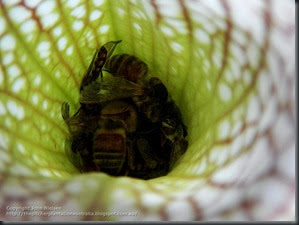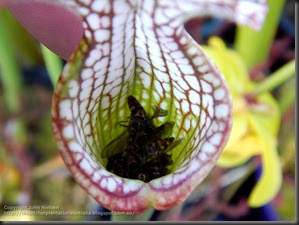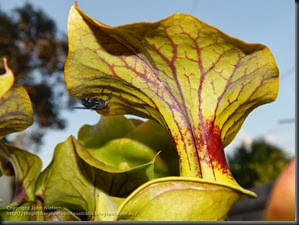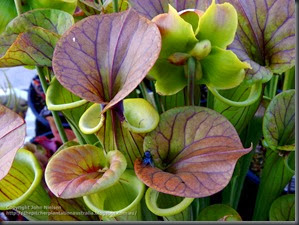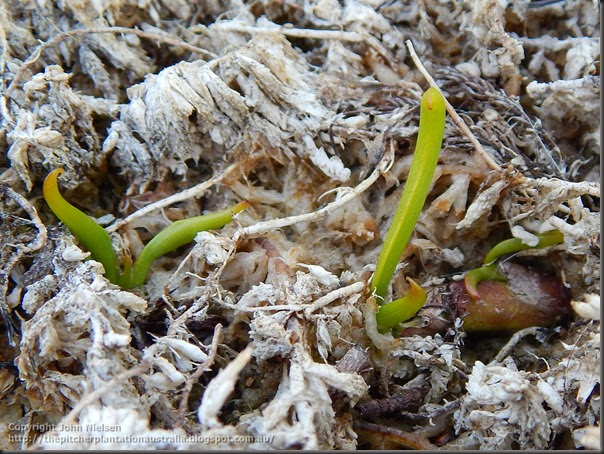Back home at last! While I was away, the Sarracenia went mad putting up their pitchers. They look stunning now, a veritable riot of colour. The only crappy thing this season – Canberra had in incredibly windy October, with 21 days of the last month having maximum wind gusts over 40 km/h. In fact, 14 of these days had wind gusting over 50 km/h. The result – lots of aborted and deformed pitchers. Interestingly, the plants in the biggest pots were much less affected than plants in smaller pots. I wonder if the larger root surface area allowed the plants in bigger pots to be more tolerant of the wind?
Sarracenia flava var. atropurpurea “FRT 1-1”. This is the tallest plant this year, standing head and shoulders above all rest. This clone has some introgression from S. leucophylla, but is nonetheless magnificent. I really do love this plant…
Sarracenia flava var. atropurpurea “Son of FRT 1-1”. Gotcha! Plants bred out this lovely flava var. atropurpurea from a cross with an unspecified flava var. rubricorpora some years ago, and it never fails to look beautiful. This pitcher opened a few days ago, with the second opening yesterday. Sadly, the wind this year has trashed a lot of the opening pitchers, although in this case the plant has responded by reducing the size of the pitchers – they were easily 200 mm (8”) taller last year.
Speaking of seedlings, here are the results of my first set of crossings. They are all products of Sarracenia flava intra-varietal crosses, so there should be some nice plants result here. I pretty much crossed all clones I had of each variety with every other clone. The all-red seedling is likely a cross between FRT 1-1 and FRT 1-5, two excellent red clones. There is also a sole seedling of flava var. rubricorpora and a couple of flava var. cuprea.
Sarracenia flava var. rugellii – I brought this clone at a Triffid park open day some years ago. It is one of the finest rugellii clones I’ve come across, with a massive throat patch and a very tight throat.
Sarracenia flava var. rubricorpora “FRT 1”. This is one of the very best var. rubricorpora I have come across, or even read about. It is not a particularly massive clone, but it never fails to produce red pitcher tubes, even if it has been freshly repotted.
Sarracenia leucophylla ‘Tarnok’. This is now the only leucophylla I grow in my collection. I have only just got it back into the collection, as a lot of people who were after this clone managed to extract all my divisions off me in exchange for flava clones I was after. Here is this plant’s flower:
I used to grow most of my Sarracenia in a greenhouse, but this year they were all outside. While the spring winds – which were particularly bad this year – can ruin pitchers, there is a benefit to keeping them under the elements: the pitchers open with the first burst of insects. This year, hoverflies (Syrphidae) were super abundant, and most of the open pitchers are well on their way to being filled. Above are some Tarnok pitchers brim full…
And here is a heavy veined flava var. cuprea from Gotcha! Plants about to nail a Muscoid fly.
The VFTs are also coming back up for another year of snapping insects – this one (and the plant behind) is a clone produced by Peter and Jessica Biddlecombe that they affectionately called red crescent. It was one of the earlier red clones available in Australia, but it seems to almost have disappeared from cultivation following clones like ’Royal Red’, ‘Akai Ryu’ and the Triffid park red clones. I might follow the advice of Carl Mazur over at Zone 6b and produce VFT seeds this year, just to see what I get coming up.
And to close off – here are some Darlingtonia coming back from their stolons. I lost all of my large plants last year – they simply rotted out. Fortunately, I had collected some stolon cuttings that had small plants already formed (which are now producing adult leaves), and cut off all the undeveloped stolons far short of where the rot symptoms were present. This photo shows one of these stolons producing new growth. Hopefully, I’ll soon have decent size plants back again soon.
Until next time, good growing.
JN.
